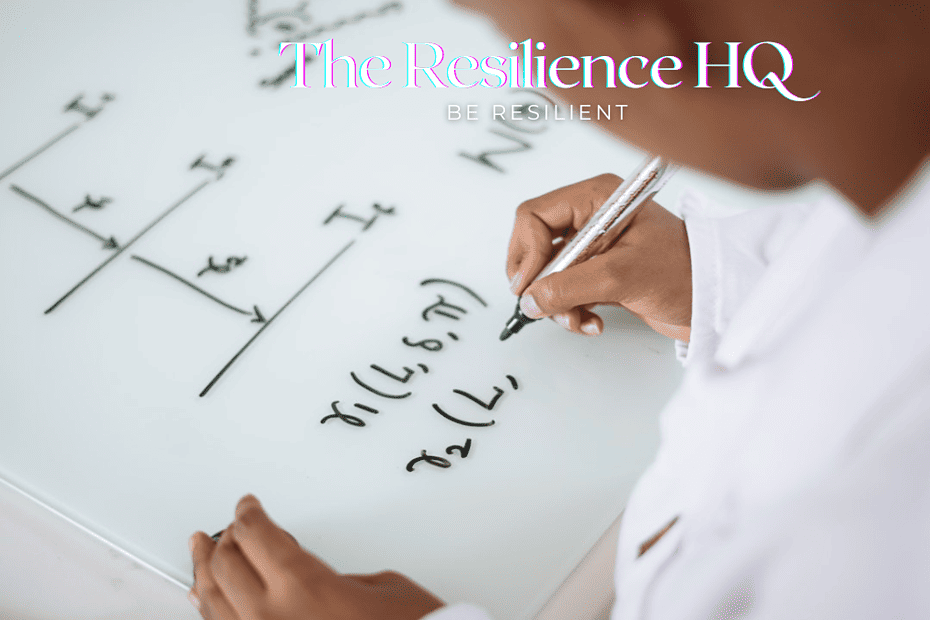Do you know someone who always manages to overcome any obstacles they face without getting frustrated or stuck? It’s an impressive skill to have and one that can make you more resilient. If you want to develop this ability, you’ll need to cultivate the right mindset and learn effective problem-solving techniques. Let me show you how.
Problems, challenges or opportunities?
Life is full of challenges, which I choose to refer to as “opportunities”. This is called positive framing, a powerful technique that enables us to view problems in a positive light. It drives us to take action and feel more empowered in our approach. We should strive to confront challenges not because we have to, but because we want to explore our current capabilities and discover new areas to grow. With this mindset, we can relish challenges and anticipate overcoming them, which helps us to set new learning objectives. This is precisely the mindset we need to become even more resilient than we already are.
It’s important to keep in mind that challenges, or what some refer to as stress, are necessary for developing resilience. Here’s a helpful resource on the topic.
To learn the specific science of problem-solving, please visit this great article from American Society for Quality (ASQ). In this article, we will focus on the overall process that we can use to help solve any problem we encounter.
The art of problem solving
Problem-solving is an essential skill in life. Without this, we will fail to progress in any area of life and remain stuck in our current position and most likely regress over time. Skills can be learned, improved and perfected over time through practice. Here is the 10-step process I use to solve any challenge I face and hope this will give you a starting point in developing your art of being a problem solver.
1. Identify if there is a problem to solve
We cannot solve a problem unless we first recognise that we have a problem. Recognising problems is the first step in becoming resourceful. If the problems are easy to solve and we have dealt with them before then we can use the same strategy and resourcefulness or new solutions aren’t needed. These are the problems that aren’t obstacles on our path to progress and spending too much time on these will only distract us from our goals and important challenges.
2. Clarify goals and determine if it is our responsibility to solve the problem
To decide whether a problem can be ignored or is worth solving, we need to have clear goals. If a problem is not related to our identified goal and is not likely to be an obstacle then we need to consider if it really is worth the time and effort to solve this problem or if can it be ignored. If we focus on problems that are not part of our goals, aren’t we just using limited time and energy on these problems rather than the challenges we need to focus on? If you are feeling confused by this step then perhaps it is time to clarify your own goals first before attempting to solve the problem.
3. Assess the problem’s impact both currently and in the future
We need to assess the issue once we have filtered the problems and how they may derail our progress. How much is this issue affecting us or likely to affect us? Is it causing us practical and emotional stress? If we do not resolve it, is it likely to cause us more problems or not?
Problems, difficulties or challenges have an impact on us. These can be our motivation, mindset, emotions or actions. It is important to be aware of these and deal with them. Ignoring the emotional impact of our difficulties can derail progress towards our goals. Learn how to overcome difficulties.
4. Gauge the necessary effort based on the severity of the issue
The time, effort and resources we spend on addressing the problem, need to reflect the challenge it is likely to cause. After all, we don’t want to spend a very long time and huge effort in solving a minor problem that is unlikely to cause us too many issues. Wasting effort in this manner will leave us less time and energy on other, potentially bigger and more important challenges. Identify how much time and effort you are allocating to solve this problem.
5. Avoid overthinking and using it as a form of procrastination
Once we have assessed our situation and become aware of the impact it is and likely to continue to have on us, we are in a position to take further action. Beware that overthinking and over-analysing can paralyse us from taking action. It can be an excuse to procrastinate therefore avoid this trap and focus on actionable steps.
Thinking without actions is just a form of procrastination.
AQ
6. Consider previous successful solutions
Now that we have decided to solve the problem and how much effort we can dedicate to it, let’s start to actually resolve the issue and use resourcefulness. If we have come across the same or similar problem before then we already know what to do and what to avoid. Using prior collations will save us time, effort and energy that can be used to solve bigger and more important problems. If we don’t know the solution then we need to be resourceful and channel our problem-solving skills.
7. Break the problem down into smaller parts for easier management
Breaking down the problem into smaller steps will help us identify which parts we can solve and which parts we will struggle with. Again, if we already know how to solve some parts then we can direct our resourcefulness towards the parts we do not know the solution to. This will be a more effective way of using our resources and help us achieve our goal quicker.
Identify and define problem step >> unknown solution box >> desired outcome
8. Create a mind map to determine the most suitable solution
Once this problem-solution-outcome equation has been mapped out, we can start thinking about all possible solutions. Brainstorming or mind mapping are good ways to start this process. We can also be resourceful even at this stage and ask for help from someone who we think might be able to help us identify solutions. Once different solutions have been mapped out, we can then assess them and shortlist the solutions that we think we are able to solve and then identify what further help and resources we need to achieve these.
9. Being resourceful
Use all available resources to solve the problem. Being resourceful is a broad set of skills and a mental attitude. This includes being persistent and not giving up when we face an obstacle. As part of this, we need to consider resources in different domains. These include time, energy, money, materials, other people, improving our knowledge and skills etc. Identify which aspects are available to us and which ones we are likely to be stuck at. Utilise the available resources to solve the problem at hand.
Our mentality is an important part of being a problem solver. We need to develop the mentality of not giving up, in other words, being persistent. Regardless of the problem, we will not give up and will find solutions to the issue. If we give up at one of the hurdles then we will not solve the problem and not achieve our goal.
An important aspect of being resourceful is asking for help. Do we need help from a person, carve out more time, need technical advice, help with managing our emotions etc? Write down the obstacle, write down what outcome you want to happen if the problem was solved and then draw a mind map of different ways a problem can be solved.
10. Evaluate the process, refine it, and learn for future
The last step of problem-solving is to evaluate our solution and then refine it. Once we have achieved our goal, we need to reflect and evaluate our efforts so that we can learn from this process. This will help us become better at solving problems in the future.

The art of problem solving in 10 steps
- Identify if there is a problem to solve.
- Clarify our goals and determine if it is our responsibility to solve the problem.
- Assess the problem’s impact both currently and in the future.
- Gauge the necessary effort based on the severity of the issue.
- Avoid overthinking and using it as a form of procrastination.
- Consider previous successful solutions.
- Break the problem down into smaller parts for easier management.
- Create a mind map to determine the most suitable solution.
- Being resourceful.
- Evaluate the process, refine it, and learn for future.
By following a step-by-step process, you can improve your problem-solving skills in various areas of life like work, social, religious, or home life. Practice makes perfect, and refining this skill will make you more efficient and effective, reducing the energy, effort, and emotional stress required to solve problems. Ignoring problems can lead to more significant issues in the future, hindering achievement and self-confidence. Therefore, problem-solving is a crucial aspect of becoming a more resilient individual.
